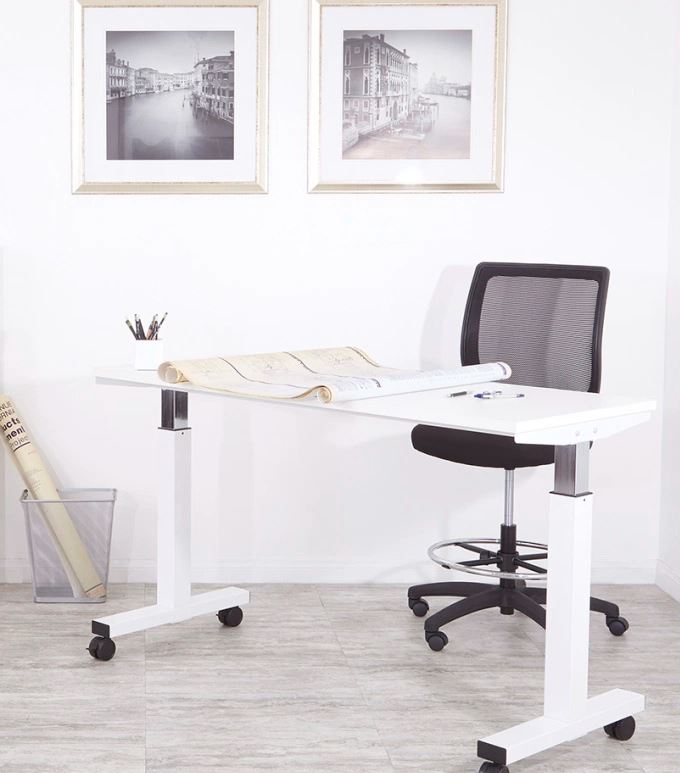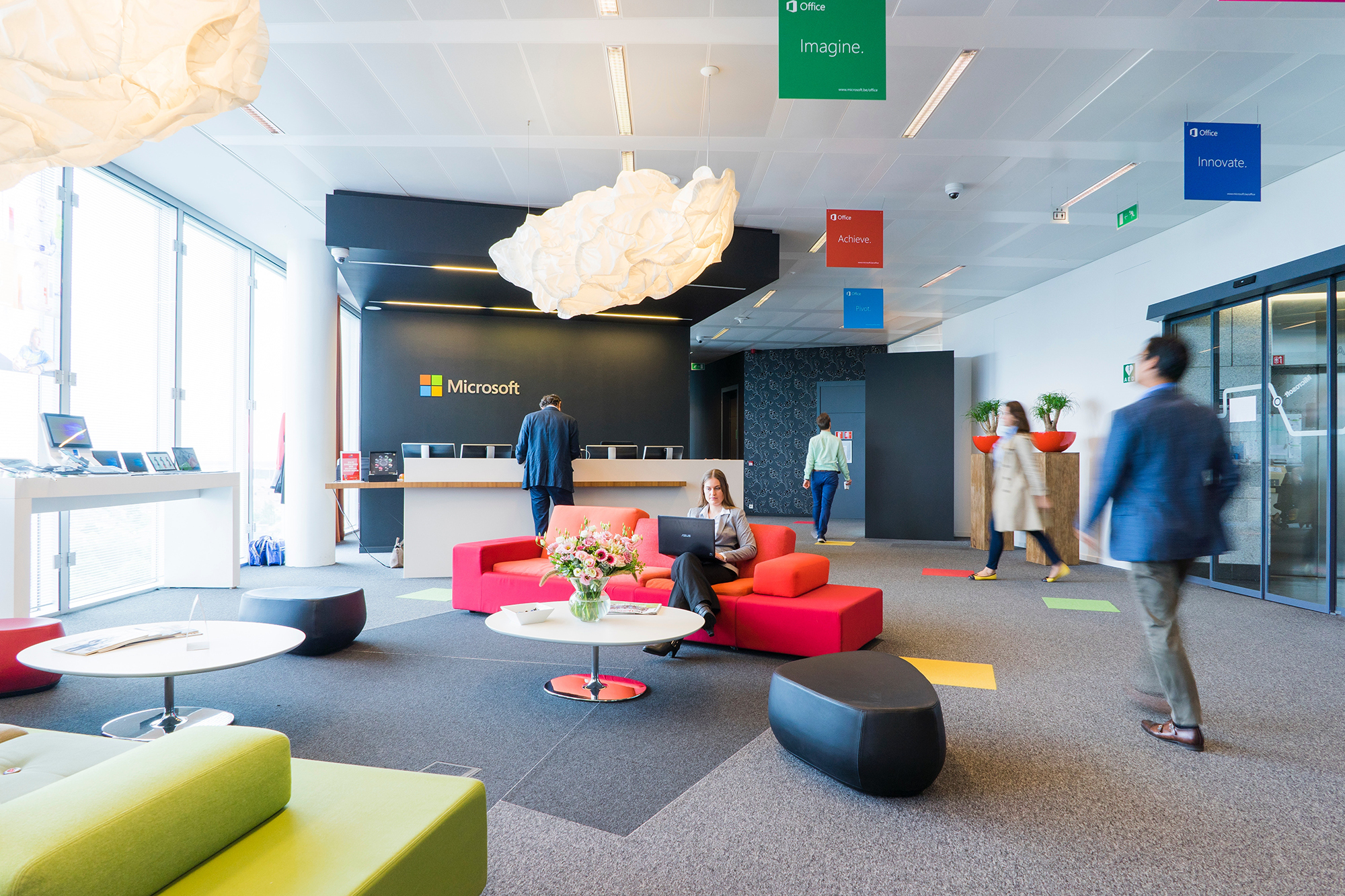The modern workforce crisis goes deeper than we initially realized. Remote and hybrid workers now spend up to 10 hours daily in sedentary positions, with 85% of professionals reporting chronic back pain and fatigue. The shift from traditional office environments to home offices has intensified our sitting epidemic, making movement-conscious workstations more critical than ever.
To address that, today’s workplace wellness strategies have moved beyond simple furniture swaps. Companies are implementing comprehensive movement ecosystems: dynamic workstations paired with walking meetings, micro-break reminders, and ergonomic assessments. Standing desks (also known as sit-stand desks and standing workstations) have become the cornerstone of these holistic approaches, serving as daily reminders to prioritize physical health during demanding work schedules.
Stand-up desks aren’t miracle cures, but they’re proven tools for reducing sedentary behavior and create more ergonomic work environments when used strategically. They are not as substitutes for exercise, but rather serve as bridges to more active, healthy, and productive workdays.
This blog will help you decide whether standing desks are the right choice for you.
The Benefits of Standing Desks
There are plenty of benefits that come from using standing desks.
- Your Metabolism Benefits: Alternating between sitting and standing increases daily caloric burn by 15-20%, while improving insulin sensitivity and reducing inflammation markers.
- Cognitive Performance Gets a Boost: 2024 studies demonstrate that standing workstations enhance focus and decision-making capabilities, particularly during afternoon energy dips that plague most professionals.
- Pain Relief That Actually Works: Users report significant reductions in lower back discomfort when using sit-stand desks correctly, with benefits appearing within just two weeks of consistent use.
- Boosted Energy and Alertness: The active posture required for standing naturally increases circulation and oxygen flow, combating the afternoon crash that derails productivity.
- Long-term Health Protection: Mounting evidence shows that breaking up prolonged sitting reduces cardiovascular disease risk and supports better posture as we age.
- Employee Satisfaction Soars: Companies investing in ergonomic wellness see higher employee retention rates, with standing desks ranking among the most appreciated workplace benefits.
The Potential Drawbacks of Standing Desks
Of course, while standing desks have plenty of benefits, standing isn’t the only solution to improved health. Extended periods of standing create their own problems: leg fatigue, varicose veins, and joint stress. Not to mention they do require a period of adjustment. The magic happens in the movement between positions, not in static standing. The key is learning when to sit, when to stand, and when to move.
Some issues to consider while using standing desks:
- Posture Problems May Persist: Poor ergonomics while standing can mirror sitting issues. If you slouch in a chair, you may also slouch at a standing desk.
- Productivity Variables: Some tasks that require intense concentration may suffer during standing periods. When that happens, it’s time to simply sit down.
- Adaptation Period Required: It takes time to develop the stamina needed to use standing desks, and most users experience initial fatigue and discomfort. It typically takes about 2-4 weeks of gradual increase to achieve those levels of stamina.
In short, standing desks deliver measurable benefits when integrated thoughtfully into a broader wellness strategy, and not when they are used as standalone solutions. That said, the ultimate value of the standing desk lies in its flexibility. Smart adjustable desks now offer memory settings, gentle transition speeds, and even posture coaching through connected apps.
Finding Your Perfect Fit
With each new iteration of standing desk, manufacturers develop new solutions. Workstations have evolved from simple height-adjustable surfaces to comprehensive wellness platforms that adapt to our unique work styles and health goals. With each new model, benefits improve, including:
- AI-Powered Height Adjustment: Modern electric desks learn your preferences and suggest optimal sitting-to-standing ratios based on your work patterns and calendar.
- Seamless Integration: Today’s adjustable workstations accommodate multiple monitors, wireless charging, and cable management while transitioning smoothly between heights.
- Wellness-Focused Design: Premium options include built-in movement reminders, posture sensors, and integration with fitness trackers to optimize your daily activity.
- Smart Ergonomic Accessories
- Dynamic Seating Options: Active sitting solutions like balance ball chairs and wobble stools provide micro-movements even during seated work periods.
- Supportive Surfaces: Advanced anti-fatigue mats now feature massage textures and encourage subtle weight shifting to maintain circulation.
- Monitoring Technology: Wearable devices and desk sensors can track your sitting-standing patterns and provide personalized recommendations.
- Budget-Conscious Innovation
- Converter Evolution: Desktop risers have become sophisticated, offering smooth transitions, keyboard trays, and monitor arms that rival full desk replacements.
- Modular Systems: Mix-and-match components allow for gradual upgrades, starting with basic converters and adding features as budgets allow.
Ready to transform your workspace into a movement-friendly environment that properly supports your well-being? Let our office furniture experts help you find the perfect standing desk solution that moves with you!




